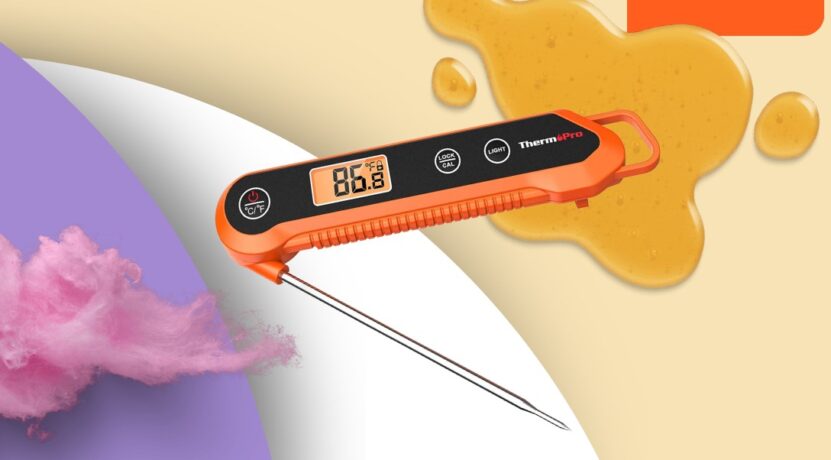When you think of meat and candy, they’re not usually two foods that you’d associate with each other. But when it comes to cooking and baking, they have more in common than you might think.
Aspiring chefs and seasoned kitchen maestros alike might find themselves wondering: “Can you use a meat thermometer for candy?” The answer might surprise you. Let’s explore the intricacies of food thermometers, delve into their potential interchangeability, and learn how you can make your kitchen escapades a surefire success.
Understanding Thermometers: Meat vs. Candy
Both meat and candy thermometers are tools designed to measure temperature. However, their specific applications can make a significant difference in the kitchen. Understanding these differences is crucial to ensure you’re using the right tool for the right job.
Meat Type
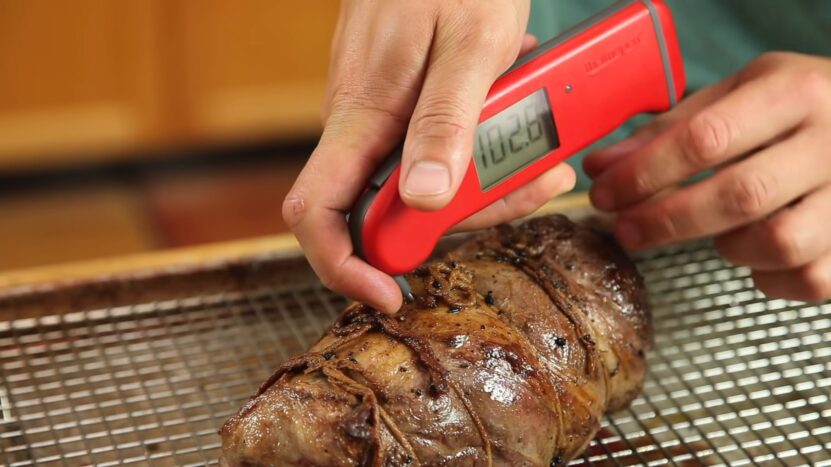
Meat thermometers are crucial to cooking meat safely and deliciously. By checking the internal temperature of the meat, these tools can help you avoid overcooking or undercooking—both of which can lead to less-than-ideal dining experiences.
Their temperature range usually spans from 140°F to 200°F, perfect for monitoring a range of meats from poultry and pork to beef and fish. Some high-end models may even extend their range a bit further, but typically, meat thermometers are not designed to withstand extreme heat.
Candy Type

Candy thermometers, on the other hand, are explicitly crafted to handle high temperatures. When making candy or deep-frying food, you’re often working with temperatures that reach up to 400°F.
They also offer the advantage of precise measurements, as even a slight deviation in temperature can drastically alter the consistency and quality of your candy. Therefore, candy thermometers typically come with designated markings for each candy stage: thread, soft ball, firm ball, hard ball, soft crack, hard crack, and caramel.
The Interchangeability Dilemma
So, can a meat thermometer be used as a candy thermometer? Technically, it can, but it comes with certain limitations.
Meat thermometers are not designed to endure the high heat involved in candy making. While they can still measure temperature, their accuracy might be compromised, and you risk damaging the tool. Also, the lack of specific temperature markings for various candy stages could lead to inconsistency in your candy-making results.
On the flip side, a candy thermometer can be used for meat, as it has a broader temperature range. However, its large size might not be suitable for thinner cuts of meat.
Ultimately, the choice to use a meat thermometer for candy or vice versa depends on the situation and your willingness to compromise accuracy and, potentially, the quality of your food. However, having both tools in your kitchen arsenal is a wise move for any ambitious cook.
Alternative Solutions
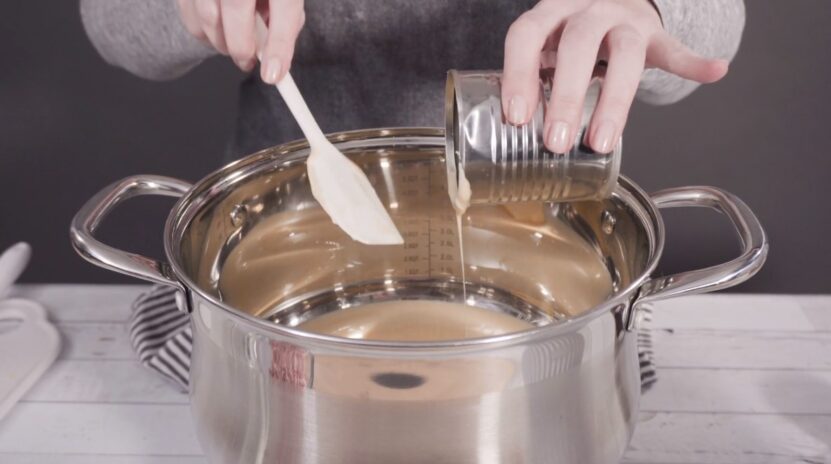
If you find yourself without a candy thermometer when a craving for homemade sweets strikes, don’t despair! There are a few alternative methods to gauge your candy’s readiness without needing a specific thermometer.
The Cold Water Test
This method involves dropping a small amount of your candy mixture into cold water. The candy’s reaction upon hitting the water will give you an idea of what stage it’s at:
- Thread Stage (230-235°F): The syrup drips from a spoon, forms thin threads in water.
- Soft Ball Stage (235-240°F): The syrup easily forms a ball while in the cold water, but flattens once removed.
- Firm Ball Stage (245-250°F): The syrup is molded into a stable ball, but loses its shape when pressed.
- Hard Ball Stage (250-265°F): The syrup holds its ball shape, but remains pliable.
- Soft Crack Stage (270-290°F): The syrup forms threads and will bend slightly before breaking.
- Hard Crack Stage (300-310°F): The syrup will crack if you try to mold it.
The water test, although a tried and true method, is not as accurate as using a thermometer. It requires experience and a keen sense of timing to perfect.
The Color Test
This method is mostly used when making caramel or toffee. You can estimate the temperature by observing the color of the sugar solution. When it reaches a deep amber color, your caramel is likely around the hard crack stage. But remember, this requires careful attention as sugar can go from perfectly caramelized to burnt in a matter of seconds!
Advanced Insights into Thermometer Usage
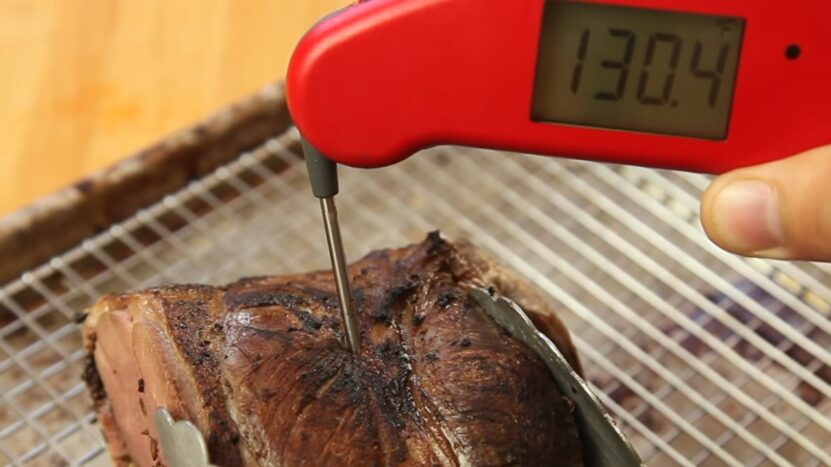
Now that we’ve covered the basics, let’s take a deeper dive into the world of thermometers, highlighting key considerations to make when purchasing one, the importance of calibration, and tips on how to properly clean and maintain your thermometer for optimal performance.
Choosing the Right One for Your Needs
When deciding on a thermometer, consider the frequency of use, the range of temperatures you’ll typically work with, and your budget.
Frequency of Use
If you cook meat or make candy infrequently, an inexpensive thermometer might be sufficient. However, if these activities are common in your kitchen, investing in a more robust, durable, and accurate thermometer could be more cost-effective in the long run.
Temperature Range
Candy thermometers typically have a higher heat capacity than meat ones, reaching up to 400°F or more. Conversely, meat thermometers have a smaller range, usually maxing out at around 200°F. Be sure to choose the one that suits your needs.
Budget
Like most tools, thermometers can vary significantly in price. While it might be tempting to opt for the cheapest one, remember that a quality thermometer is a sound investment that can last for many years if properly cared for.
The Importance of Calibration
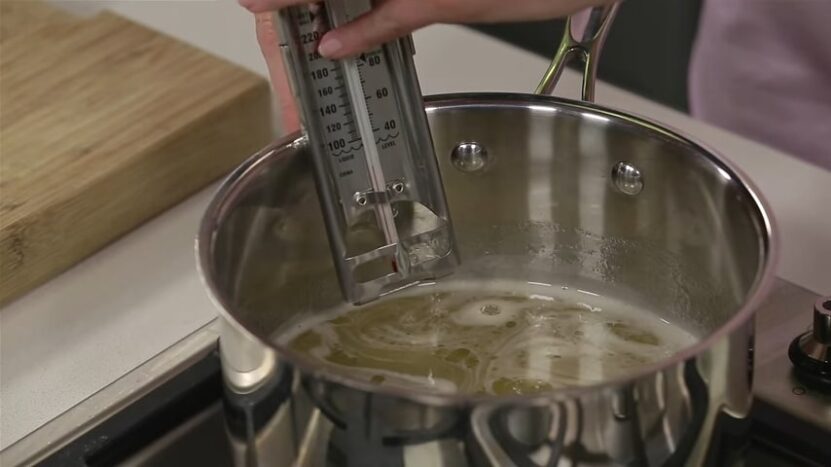
Even the best thermometers can become inaccurate over time due to frequent use, drops, or drastic temperature changes. That’s why calibration is so critical—it ensures it is reading temperatures accurately.
Most modern types can be easily calibrated at home using the ice water or boiling water method:
- Ice Water Method: Fill a glass with ice and then top it off with cold water. Insert your thermometer into the glass, making sure it’s immersed in the water but not touching the sides or bottom of the glass. It should read 32°F (0°C).
- Boiling Water Method: Boil a pot of distilled water. Once the water is at a rolling boil, insert your thermometer, ensuring it’s not touching the sides or bottom of the pot. It should read 212°F (100°C) if you’re at sea level.
If the thermometer doesn’t read the correct temperature during these tests, you’ll need to adjust it, if possible. If it can’t be adjusted, you might need to replace it to ensure accurate readings.
Cleaning and Maintenance
Proper cleaning and maintenance extend the lifespan of your thermometer and keep it functioning optimally. Here are some tips to help you take care of your tool:
- Cleaning: Always clean it before and after use. Warm water and mild soap usually do the trick. Be sure not to submerge it entirely if it’s not waterproof. Avoid using abrasive materials to clean the stem as it can damage the sensitive probe.
- Storage: Store it in a clean, dry place. Many models come with a protective sheath for the probe—use it to prevent any damage.
- Handling: Handle it with care. Dropping or rough handling can cause the thermometer to become inaccurate.
Innovations
As with most kitchen tools, innovation hasn’t left thermometers behind. There are now digital variations that offer fast and highly accurate readings. Some even connect to smartphone apps, allowing you to monitor temperatures remotely, which can be handy for lengthy cooking processes like smoking meats.
Likewise, dual-probe thermometers are available for cooking enthusiasts who want to track two temperatures simultaneously—for example, the internal temperature of a turkey and the ambient temperature of the oven.
To Sum Up
While a meat thermometer can technically be used for candy making, it’s not the most reliable or accurate tool for the job due to its lower heat tolerance and lack of candy stage markers. Investing in a dedicated candy thermometer is recommended if you plan to venture into the world of candy making frequently.
However, if you’re in a pinch and need to check the temperature of your candy mixture, methods such as the cold water or color test can come to your rescue. Remember, precision in temperature is vital for perfect candy results, and experience will be your best guide!
Visit icandywrap.com regularly if you want to improve your cooking skills and learn everything there is to candy sience.

